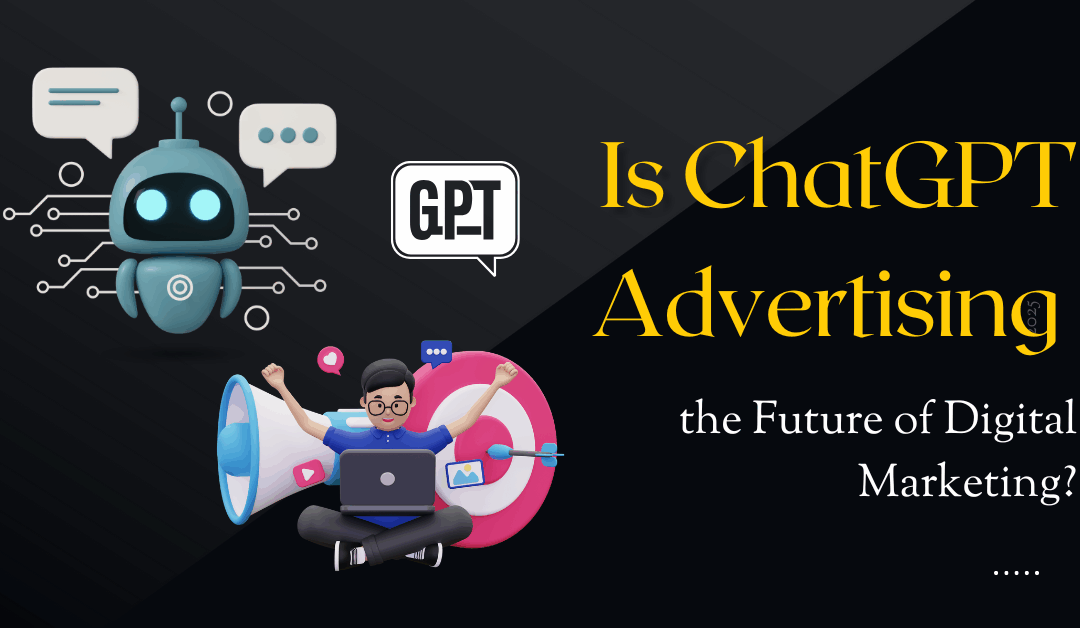Is ChatGPT Advertising the Future of Digital Marketing?
Yes, ChatGPT Advertising is poised to become a revolutionary force in digital marketing, potentially creating a new high-intent advertising channel that could rival traditional search and social media.
While not yet active, OpenAI has confirmed it is exploring ad formats for its free users. This move would unlock a massive, highly engaged audience for brands. The key difference lies in user intent. Unlike users passively scrolling on social media, ChatGPT users are actively asking questions and seeking specific solutions, making them an invaluable audience for advertisers.
Here’s a breakdown of what ChatGPT Advertising could mean for the future of marketing and how you can prepare for it.
What Could ChatGPT Advertising Look Like?
The consensus is that ads on the platform will be deeply integrated and conversational, moving beyond traditional disruptive banners.
- Sponsored Responses: Similar to Google’s paid search ads, a brand’s answer could be featured at the top of a response, clearly labeled as “Sponsored.” For example, a query for “best project management tool” might feature a sponsored answer from Asana or ClickUp.
- Native Product Mentions: The AI could naturally weave a paid brand or product mention into its organic-sounding response. This would be a subtle but powerful placement.
- Contextual Recommendations: As a conversation progresses, ChatGPT could offer relevant products or services. If you’re discussing a content marketing strategy, the AI might suggest an SEO tool or a writing assistant.
Why This Is a Game-Changer for Marketers
The core value of ChatGPT Advertising is accessing users at the exact moment of their need.
- Unprecedented High Intent: Users aren’t just searching for keywords; they are describing their problems in natural language. This gives advertisers a much richer context and the ability to target users with surgical precision.
- A New Environment: It’s not search, and it’s not social. It’s a “solution-finding” environment. Ads will likely be less about disruption and more about utility—providing a helpful, relevant solution at the moment the user asks for it.
- Massive Scale: With hundreds of millions of users, ChatGPT offers an audience size that few other platforms can claim, especially one with such a high concentration of users in problem-solving mode.
How to Prepare Your Brand Today (Before Ads Launch)
Even before a formal ad platform rolls out, the rise of AI-driven answers means you should be optimizing your brand for conversational AI right now. The brands that ChatGPT already trusts and references organically will have a significant advantage when ChatGPT Advertising becomes a reality.
- Build Content Authority: Focus on creating genuinely helpful, in-depth content (guides, case studies, original research) that establishes your expertise. AI models are trained on data that signals authority.
- Optimize for Conversational Queries: Shift your keyword strategy. Instead of just “best CRM,” target long-tail conversational questions like “How do I manage customer data for a small remote team?”
- Use Structured Data (Schema): Implement schema markup on your website (like FAQ, Product, and Organization schema) to help AI systems clearly understand what your content is about.
- Earn Relevant Brand Mentions: Secure links and mentions from other authoritative sites in your industry. This builds the trust signals AI models look for.
The Bottom Line
The conversation around ChatGPT Advertising isn’t just about a new place to run ads; it’s about a fundamental shift in how users find information. This new channel will reward brands that are helpful, authoritative, and deeply integrated into the user’s quest for answers. The marketers who start preparing for this conversational future today will be the ones who dominate it tomorrow.

